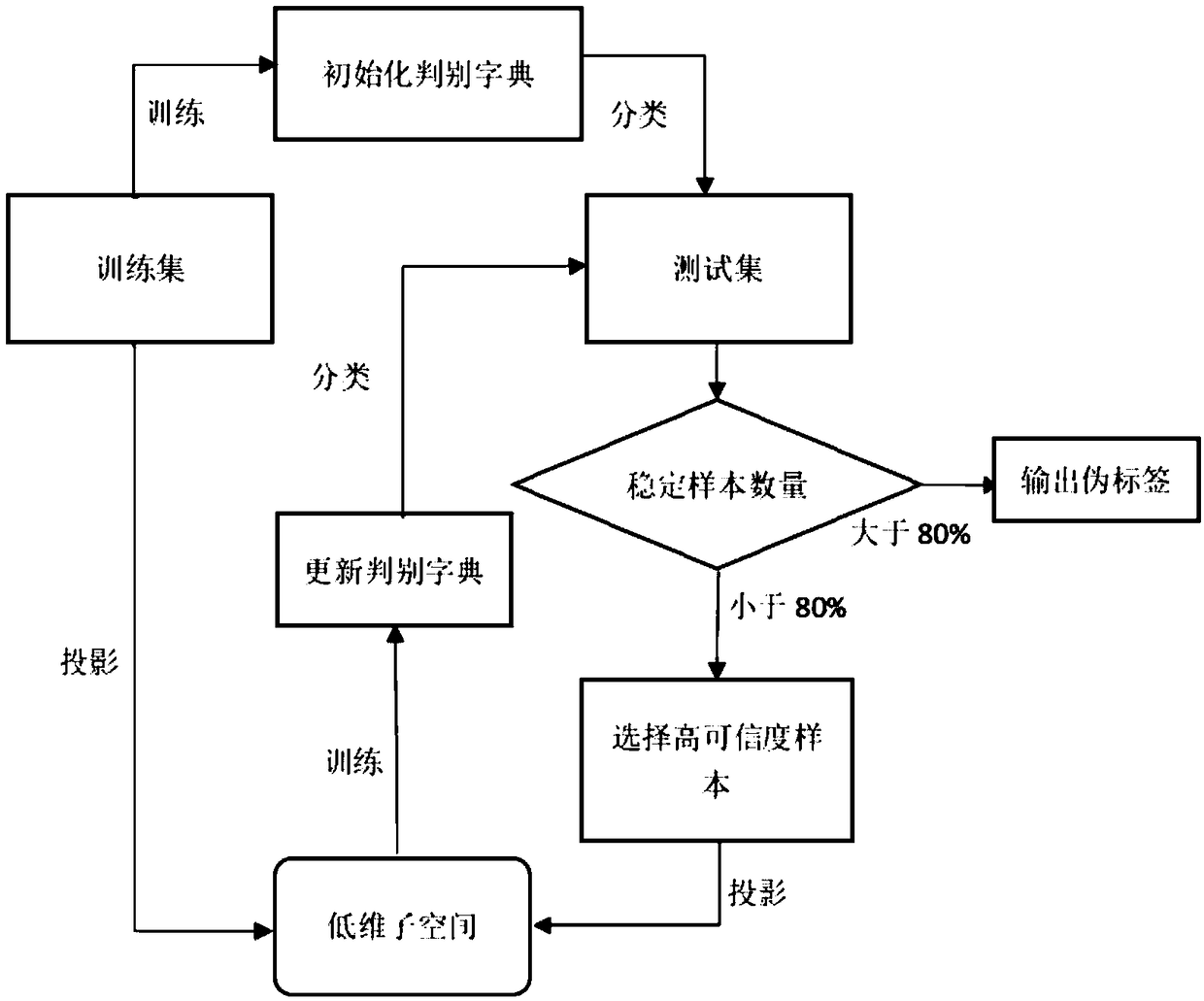Image classification method based on subspace projection and dictionary learning
A subspace projection and dictionary learning technology, applied in character and pattern recognition, instrumentation, computing, etc., can solve problems such as poor classifier performance and large distribution of test set samples.
- Summary
- Abstract
- Description
- Claims
- Application Information
AI Technical Summary
Problems solved by technology
Method used
Image
Examples
Embodiment Construction
[0105] For the domain adaptation problem in transfer learning (the source domain is a small number of labeled training set images, the target domain is sufficient unlabeled test set images, and there is a large distribution difference between the training set and test set images), Our goal is to enable the classifier trained on the training set to have a good classification effect on the test set samples of the target domain through the algorithm.
[0106] Below in conjunction with accompanying drawing, technical scheme of the present invention is described in further detail:
[0107] The invention discloses an image classification method based on subspace projection and dictionary learning:
[0108]After initializing the dictionary with the training set samples, use the dictionary to add pseudo-labels to the test set samples, and select the test set samples with high confidence in the pseudo-labels to join the iterative training dictionary process. Project the labeled traini...
PUM
 Login to View More
Login to View More Abstract
Description
Claims
Application Information
 Login to View More
Login to View More - R&D
- Intellectual Property
- Life Sciences
- Materials
- Tech Scout
- Unparalleled Data Quality
- Higher Quality Content
- 60% Fewer Hallucinations
Browse by: Latest US Patents, China's latest patents, Technical Efficacy Thesaurus, Application Domain, Technology Topic, Popular Technical Reports.
© 2025 PatSnap. All rights reserved.Legal|Privacy policy|Modern Slavery Act Transparency Statement|Sitemap|About US| Contact US: help@patsnap.com



